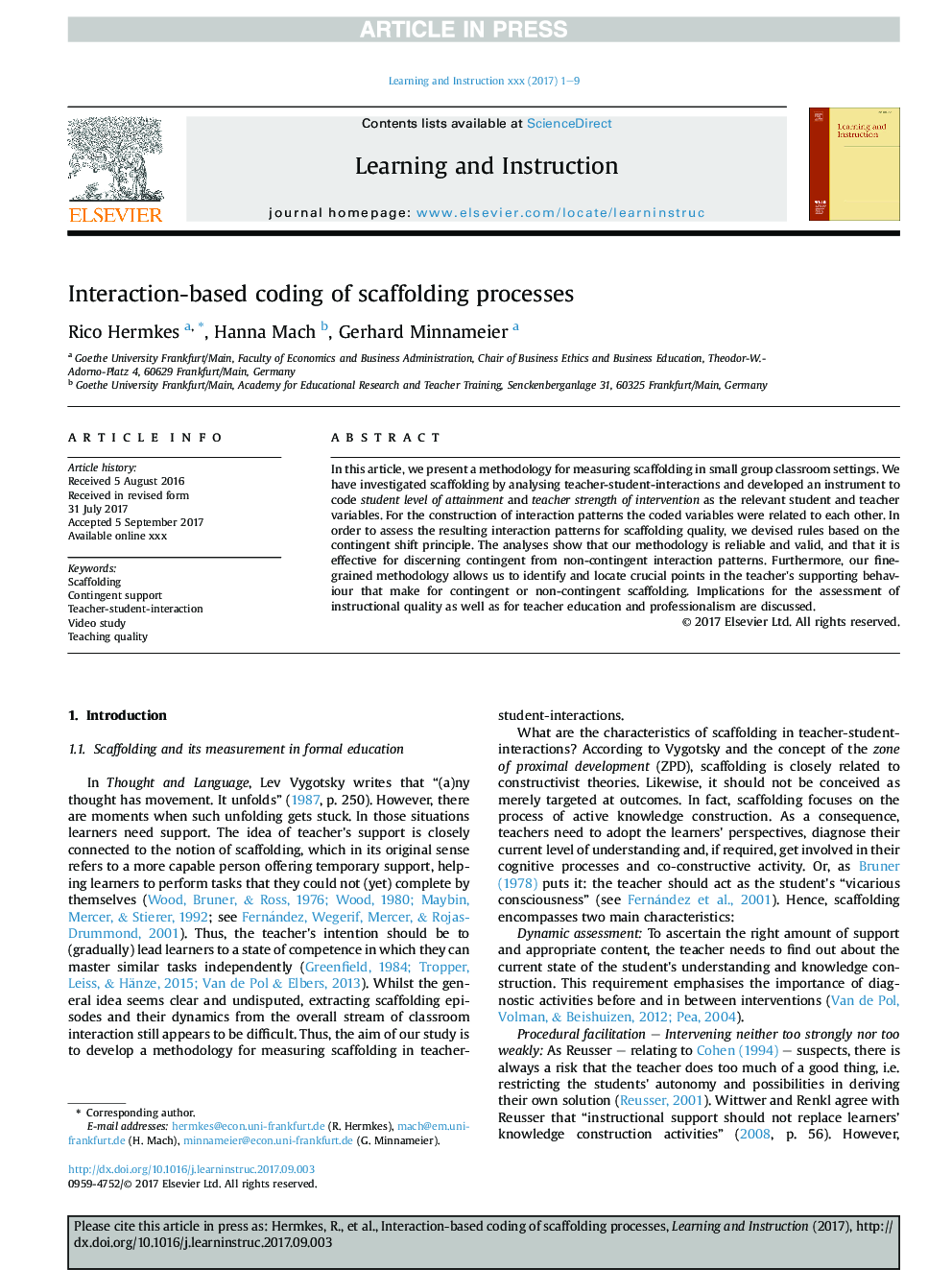| Article ID | Journal | Published Year | Pages | File Type |
|---|---|---|---|---|
| 6845674 | Learning and Instruction | 2018 | 9 Pages |
Abstract
In this article, we present a methodology for measuring scaffolding in small group classroom settings. We have investigated scaffolding by analysing teacher-student-interactions and developed an instrument to code student level of attainment and teacher strength of intervention as the relevant student and teacher variables. For the construction of interaction patterns the coded variables were related to each other. In order to assess the resulting interaction patterns for scaffolding quality, we devised rules based on the contingent shift principle. The analyses show that our methodology is reliable and valid, and that it is effective for discerning contingent from non-contingent interaction patterns. Furthermore, our fine-grained methodology allows us to identify and locate crucial points in the teacher's supporting behaviour that make for contingent or non-contingent scaffolding. Implications for the assessment of instructional quality as well as for teacher education and professionalism are discussed.
Related Topics
Social Sciences and Humanities
Psychology
Developmental and Educational Psychology
Authors
Rico Hermkes, Hanna Mach, Gerhard Minnameier,
